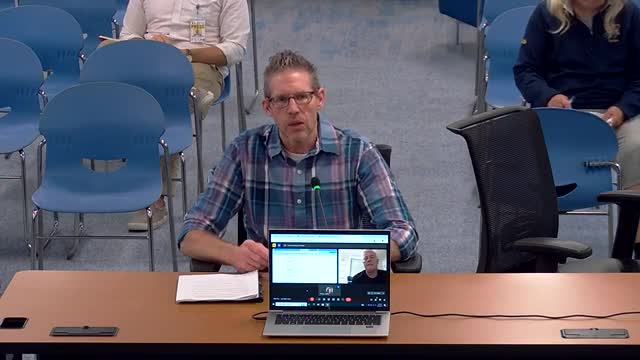Health Officials Warn of PFAS Risks in Everyday Products
August 28, 2024 | HASTINGS PUBLIC SCHOOL DISTRICT, School Boards, Minnesota
This article was created by AI summarizing key points discussed. AI makes mistakes, so for full details and context, please refer to the video of the full meeting. Please report any errors so we can fix them. Report an error »

In a recent government meeting, officials discussed the ongoing concerns surrounding PFAS (per- and polyfluoroalkyl substances) contamination and its implications for public health. The dialogue highlighted the need for further investigation into the safety of drinking water and the potential risks associated with PFAS exposure, particularly for vulnerable populations such as infants and nursing mothers.
Director Miller emphasized the importance of addressing not only water contamination but also other sources of PFAS exposure, including household products like cleaning solutions and flame-retardant materials. The officials acknowledged that while it may be challenging to eliminate PFAS entirely from the environment, proactive measures can be taken to reduce exposure.
Dr. Burns raised the possibility of collaborating with the Minnesota Department of Health to analyze existing data and schematics related to PFAS, suggesting that insights from health engineers could provide clarity on the issue. However, it was noted that there is limited precedent for large-scale applications of PFAS filtration systems outside specialized environments, such as laboratories.
The meeting also touched on the complexities of implementing filtration systems in kitchens, where dual filtration for both descaling and PFAS removal could pose logistical challenges. Despite the urgency felt in previous discussions, officials expressed a more measured approach this time, indicating that while the situation remains serious, immediate action may not be necessary as drinking water safety has been addressed.
As the meeting concluded, participants agreed to gather additional information before making any financial commitments towards PFAS mitigation strategies, reflecting a cautious yet proactive stance on public health and environmental safety.
Director Miller emphasized the importance of addressing not only water contamination but also other sources of PFAS exposure, including household products like cleaning solutions and flame-retardant materials. The officials acknowledged that while it may be challenging to eliminate PFAS entirely from the environment, proactive measures can be taken to reduce exposure.
Dr. Burns raised the possibility of collaborating with the Minnesota Department of Health to analyze existing data and schematics related to PFAS, suggesting that insights from health engineers could provide clarity on the issue. However, it was noted that there is limited precedent for large-scale applications of PFAS filtration systems outside specialized environments, such as laboratories.
The meeting also touched on the complexities of implementing filtration systems in kitchens, where dual filtration for both descaling and PFAS removal could pose logistical challenges. Despite the urgency felt in previous discussions, officials expressed a more measured approach this time, indicating that while the situation remains serious, immediate action may not be necessary as drinking water safety has been addressed.
As the meeting concluded, participants agreed to gather additional information before making any financial commitments towards PFAS mitigation strategies, reflecting a cautious yet proactive stance on public health and environmental safety.
View full meeting
This article is based on a recent meeting—watch the full video and explore the complete transcript for deeper insights into the discussion.
View full meeting
